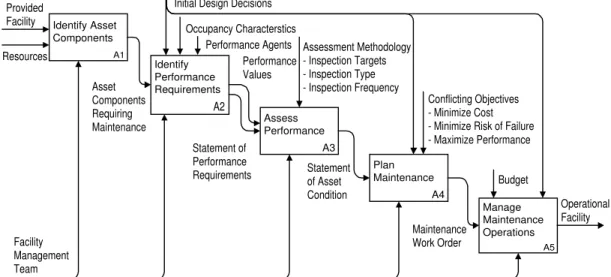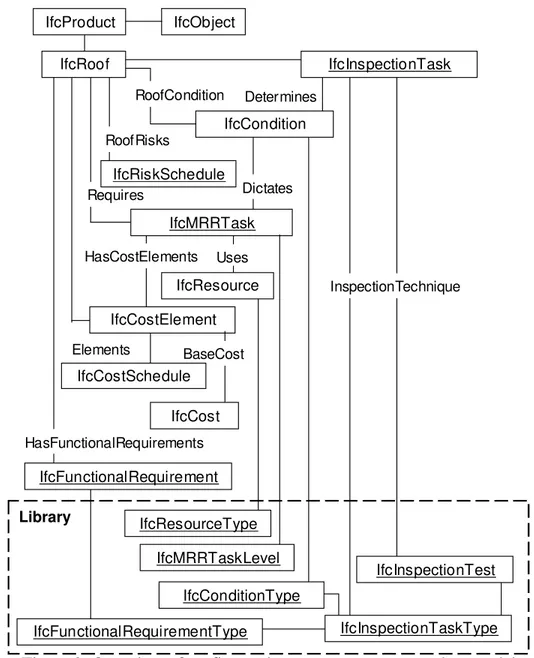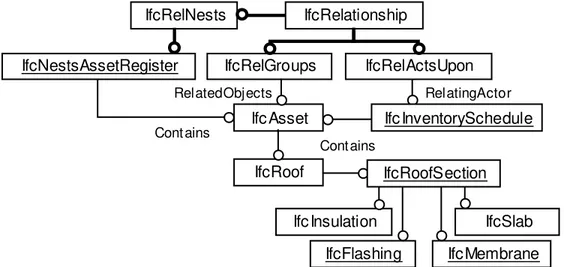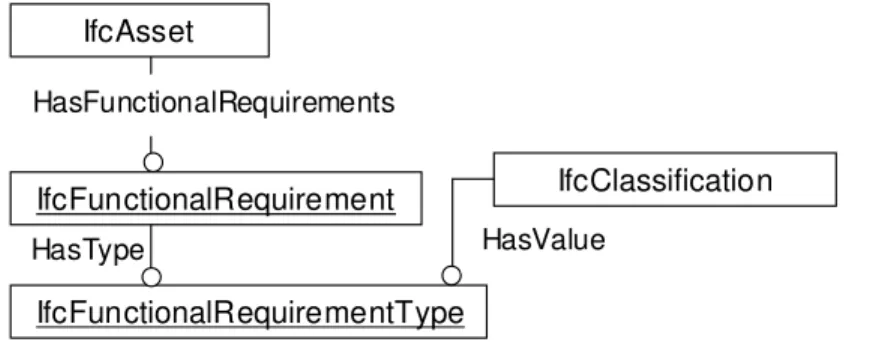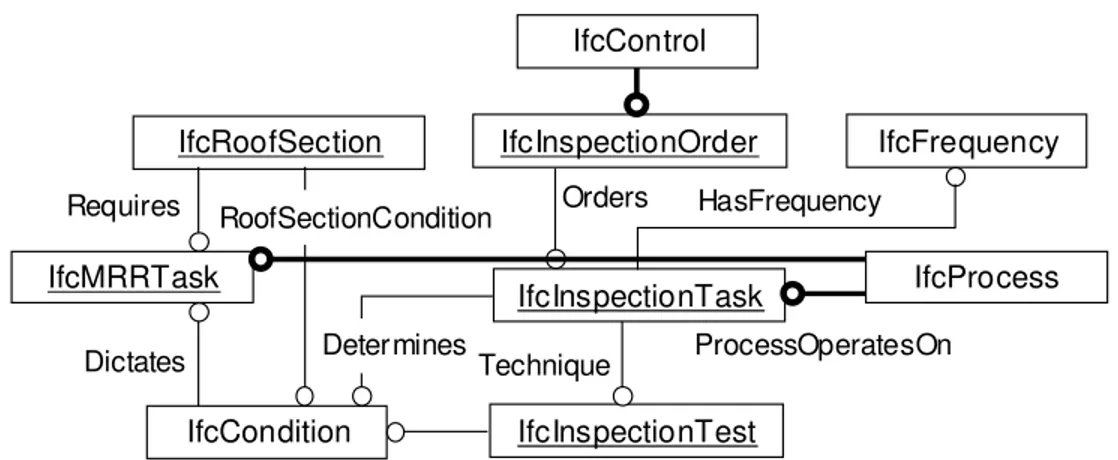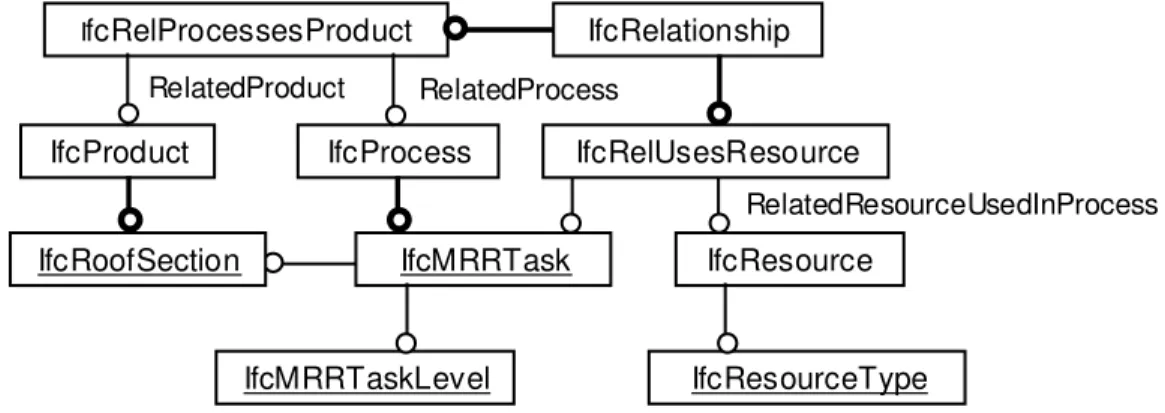READ THESE TERMS AND CONDITIONS CAREFULLY BEFORE USING THIS WEBSITE.
https://nrc-publications.canada.ca/eng/copyright
Vous avez des questions? Nous pouvons vous aider. Pour communiquer directement avec un auteur, consultez la première page de la revue dans laquelle son article a été publié afin de trouver ses coordonnées. Si vous n’arrivez pas à les repérer, communiquez avec nous à PublicationsArchive-ArchivesPublications@nrc-cnrc.gc.ca.
Questions? Contact the NRC Publications Archive team at
PublicationsArchive-ArchivesPublications@nrc-cnrc.gc.ca. If you wish to email the authors directly, please see the first page of the publication for their contact information.
This publication could be one of several versions: author’s original, accepted manuscript or the publisher’s version. / La version de cette publication peut être l’une des suivantes : la version prépublication de l’auteur, la version acceptée du manuscrit ou la version de l’éditeur.
Access and use of this website and the material on it are subject to the Terms and Conditions set forth at IFC-based data model for integrated maintenance management
Hassanain, M. A.; Froese, T. M.; Vanier, D. J.
https://publications-cnrc.canada.ca/fra/droits
L’accès à ce site Web et l’utilisation de son contenu sont assujettis aux conditions présentées dans le site LISEZ CES CONDITIONS ATTENTIVEMENT AVANT D’UTILISER CE SITE WEB.
NRC Publications Record / Notice d'Archives des publications de CNRC:
https://nrc-publications.canada.ca/eng/view/object/?id=5fc5d498-79cf-47e3-93f8-a4a39d0b8c2f https://publications-cnrc.canada.ca/fra/voir/objet/?id=5fc5d498-79cf-47e3-93f8-a4a39d0b8c2f
IFC-based Data Model for Integrated Maintenance Management Mohammad A. Hassanain1, Thomas M. Froese2, MASCE, and Dana J. Vanier3
Abstract
This paper presents an object model for maintenance management of roofing systems as a case study to demonstrate the applicability of a proposed generic framework for integrating the maintenance management of built-assets. The model builds upon the Industry Foundation Classes (IFCs) (Releases 2.0 and 2.x) to define object requirements and relationships for the exchange and sharing of maintenance information between applications. Maintenance Management is one of the defined projects within the Facilities Management (FM) domain committee of the International Alliance of Interoperability (IAI). The paper proposes several extensions to the IFC’s including the representation of functional requirements, assessed conditions of objects, inspection and maintenance tasks, and libraries of non-project specific information. Usage scenarios are provided to illustrate the use of the model to carry out selected processes.
Résumé
Ce document présente un modèle objet de gestion de l’entretien des couvertures de bâtiments; il s’agit d’une étude de cas visant à montrer l’applicabilité d’un cadre générique d’intégration de la gestion de l’entretien des biens bâtis. Ce modèle, basé sur les Industry Foundation Classes (IFC, versions 2.0 et 2.x), définit les exigences et relations objets en vue de l’échange et du partage de l’information de gestion entre les applications. La gestion de l’entretien est l’un des projets définis au sein du comité de gestion des installations de l’International Alliance of Interoperability (IAI). Le document propose plusieurs ajouts aux IFC, en particulier la représentation des exigences fonctionnelles, l’évaluation des conditions des objets, les tâches d’inspection et d’entretien, ainsi que des bibliothèques d’information non propre à tel ou tel projet. L’auteur présente des scénarios d’usage pour illustrer l’utilisation du modèle en vue de la mise en oeuvre de certains processus.
Introduction
The efficient practice of asset maintenance management requires sharing of technical and administrative information among various computer applications, in addition to sharing information among individuals. This data sharing, in turn, demands common data standards that can enable information to be exchanged from one application to another. The International Alliance of Interoperability (IAI), an industry based consortium for the Architecture, Engineering, Construction and
1
Ph.D. Candidate, Department of Civil Engineering, University of British Columbia, Vancouver, BC, Canada, V6T 1Z4, mohammad@civil.ubc.ca
2
Facilities Management (AEC/FM) industry, is developing data standards in the form of Industry Foundation Classes (IFC’s). This paper focuses on maintenance management as one of the projects within the facilities management (FM) domain in the IAI. The paper presents the development of a data model for maintenance management of roofing systems, as a case study to demonstrate the applicability of a generic framework proposed to integrate the management processes involved in the maintenance of built-assets. The model also provides a direction for the implementation of the IFC’s in a maintenance management software application. It is envisaged that the intended user of the developed application would be typical middle-management staff (referred to as operational staff) in a facilities management organization engaged in managing several assets. Their scope includes implementing the decisions made at the strategic, tactical or operational planning windows. The strategic planning window involves the long term planning of facilities, usually beyond a five-year horizon. The tactical window looks at the tactical positioning of the organization in the two to five year frame. The operational window concerns itself with the implementation of the strategic and tactical level in day-to-day operations, normally within the current budget year (Gordon and Shore 1998).
Generic Framework Model
The generic framework of maintenance management is described schematically as an IDEF0 process model, shown in Figure 1 (boxes represent tasks
while arrows from the left, right, top and bottom represent inputs, outputs, controls, and mechanisms, respectively). A process model describes the tasks that need to be undertaken. It illustrates how and what information needs to be communicated between tasks (Federal 1993). The framework starts with carrying out an inventory of all assets requiring maintenance during their service life and ends with scheduling maintenance operations. For each of the five typical tasks, the authors have defined a number of sub-tasks, but these will not be discussed further in this paper since the focus here is on the associated data model.
A1 Identify Asset Components A2 Identify Performance Requirements A3 Assess Performance A4 Plan Maintenance A5 Manage Maintenance Operations Provided Facility Resources Asset Components Requiring Maintenance Statement of Performance Requirements Performance Values Statement of Asset Condition Maintenance Work Order Operational Facility Assessment Methodology - Inspection Targets - Inspection Type - Inspection Frequency Conflicting Objectives - Minimize Cost - Minimize Risk of Failure - Maximize Performance Initial Design Decisions
Performance Agents Occupancy Characterstics Facility Management Team Budget
Roofing Maintenance Management Model
Roofing systems, specifically flat, or low-slope conventional assemblies, were chosen as building system that is representative of build-asset maintenance domains in the Building Envelope Life Cycle Asset Management (BELCAM) project (http://www.nrc.ca/irc/bes/belcam). The project is investigating service life prediction and maintenance management of building envelope components. The BELCAM project identifies maintenance management as one of the essential “enabling” technologies to permit asset managers to operate assets efficiently (Vanier and Lacasse 1996).
Determines Library IfcObject IfcInspectionTaskType IfcInspectionTest IfcRoof RoofCondition RoofRisks Requires Uses Dictates IfcMRRTask HasCostElements IfcCostElement Elements BaseCost HasFunctionalRequirements IfcCost IfcFunctionalRequirementType IfcFunctionalRequirement IfcCostSchedule IfcResource IfcResourceType IfcRiskSchedule IfcInspectionTask IfcMRRTaskLevel IfcConditionType InspectionTechnique IfcCondition IfcProduct
Figure 2: Overview of roofing maintenance management data model Overview of the Data Model
class diagram for the roofing maintenance management model. The diagram shows a collection of project-specific model elements (i.e. classes and relationships), and project-independent, or “library”, elements, which represent information that can apply across a wide range of projects.
The model, while making use of existing IFCs within Release 2.0 and 2.x, proposes a set of IFCs that should be considered within Release 3.0 or later. In this paper, throughout Figures 2 to 7, existing IFCs within Releases 2.0 and 2.x are shown in plain text, while proposed IFCs to be included in Release 3.0 or later versions are shown as underlined text. Appendix A lists the newly proposed set of IFCs.
Briefly, the model in Figure 2 illustrates that a roofing system (IfcRoof), a subtype of IfcProduct, can be associated with a series of defined functional requirements (IfcFunctionalRequirement). The roof can be assessed against these functional requirements through inspections or “condition assessment surveys” (CAS) (IfcInspectionTask). The CAS determines the condition (IfcCondition) of the roofing system, which may, in turn, lead to a range of options to maintain, repair, or renew the existing system (IfcMRRTask). Assessment of the risks (IfcRiskSchedule) and costs (IfcCostElement) associated with a certain management option would be considered, as would the resources (IfcResource) required to execute a maintenance, repair, or renewal (MRR) task.
This approach uses “type” objects to represent “library” information. That is, project-specific objects in a project data set can reference objects that represent types of that object. For example, a specific resource, a roofing maintenance crew, can be associated with a resource type object that describes attributes typical of all roofing maintenance crews (typical crew makeup, productivity rates, unit costs, etc.). The specific crew object can inherit these values from the type object, or can define overriding values.
The concept of type objects could have many uses within the IFC’s (product component types, actor types, resource types, work task types, etc.). There are no type objects currently defined within the IFC’s. However, some of the capabilities of type objects could be provided by the IFC’s dynamic type-driven properties mechanism. Also, the concept of type objects is closely related to the concept of linking objects within a project object model to additional information referenced from an external library. A project is currently underway within the IAI to investigate external library issues for the IFCs.
Development Methodology
The authors have developed their maintenance management data model following a methodology similar to that used within the International Alliance of Interoperability (IAI 1999). The methodology began with developing initial process models (as shown in Figure 1) and usage scenarios (discussed in the following sections) and led to defining data model extensions to the existing IFC classes. These data models are shown in EXPRESS-G notation in Figures 3 through 7 (boxes represent classes, solid lines represent relationship between classes and heavy lines represent subtype inheritance relationships).
Process A1: Identify Asset Components
In this maintenance management model, the facility management team, through its administrative staff, carries out an inventory activity, which identifies all roofing sections to be managed. Managing roofs on the roof-section level provides a more precise means of evaluating condition and determining maintenance, repair, and renewal requirements (Bailey et al. 1990). For each roof section, the inventory contains basic information on occupancy (the building use function occurring under the roof section), section area, type of structural frame, thermal insulation, waterproofing membrane, and flashing.
An IfcAsset represents the fact that some object is being treated as an asset for facilities management economic and maintenance management applications. IfcAsset is a subclass of IfcGroup, and it can be associated with a collection of IfcObjects (the things that are being treated as assets) through the IfcRelGroups relationship object. Although an IfcAsset can be associated with any type of IfcObject, IfcAsset itself has no subclasses, and it is assumed that the same data structure can be used to represent the “asset-related” information for any type of asset. An asset register acts as a record of all assets. A nesting capability for the assets in asset registers establishes a procedure for identifying sub-components of assets. The entity IfcNestsAssetRegister, a subtype of IfcRelNests, is used to establish the nesting relationship.
While the central focus of the IFCs has been on representing physical project data, the scope of the IFCs extends to representing non-physical data (Froese and Yu 1999). The IFC model in Figure 3 provides a representation of the physical things (components of the roofing system, i.e. IfcRoofSection, IfcInsulation, IfcFlashing, IfcSlab, and IfcMembrane) and non-physical things (IfcAssetRegister and IfcInventorySchedule). Cont ains Cont ains RelatedObjects RelatingActor Ifc Asset IfcRelGroups IfcRelationship IfcRelNests IfcRelActsUpon IfcRoof Ifc InventorySchedule IfcFlashing Ifc Insulation IfcMembrane IfcSlab IfcNestsAssetRegister IfcRoofSection
Figure 3: IFC Model for identifying roofing system components Process A2: Identify performance requirements
The facility management team, through its engineering staff, identifies the categories of performance requirements of roofing systems, as well as the
tightness, energy control, condensation control, air leakage control, load accommodation, and maintainability (Lounis et al. 1998).
Figure 4 shows the data model for representing the performance requirements of an asset. If an IfcAsset object is associated with roof insulation, for example, an IfcFunctionRequirementType object may be used to represent a requirement to maintain a thermal resistance value (R-value), and an IfcFunctionRequirement object may be used to represent the specific outdoor environment. The general IFC classification system mechanism can be used to define a catalog or library of functional requirements. HasType IfcClassification IfcFunctionalRequirementType IfcFunctionalRequirement HasFunctionalRequirements IfcAsset HasValue
Figure 4: IFC Model for identifying performance requirements of roofing systems Process A3: Assess Performance
The facility management team, through its specialist members (roofing trade), carries out one or both of the following scenarios: (a) a preventative maintenance action, represented as a scheduled condition assessment survey for predefined components of the roofing assembly, at predefined frequencies, to inspect the condition of the roof visually, assess its condition, and record anomaly severity level and quantity, (b) a corrective maintenance action, which is generated from a request by an facility user to rectify anomalies found on the roof. A recommendation to maintain, repair, or renew (MRR) the existing roofing system is made based on the observations recorded and condition rating of the roofing assembly.
As shown in Figure 5, the point at which an inspection is initiated is modeled as an IfcInspectionOrder, a subtype of IfcControl. An inspection activity (IfcInspectionTask), a subtype of IfcProcess then takes place to determine the current condition (IfcCondtion) of a roof section, hence dictating the need for a MRR activity (IfcMRRTask).
IfcCondition IfcFrequency IfcInspectionTest IfcMRRTask IfcRoofSection Requires Dictates Determines RoofSectionCondition Orders IfcProcess IfcInspectionTask Technique HasFrequency ProcessOperatesOn IfcControl IfcInspectionOrder
Figure 5: IFC Model for performance assessment Process A4: Plan maintenance
The facility management team, through its feasibility analysts, evaluates the recommendation for carrying out MRR, taking into consideration a range of conflicting management objectives. These objectives are minimizing cost, minimizing the risk of roof failure, and maximizing the performance of the roof based on the remaining service life (Lounis et al. 1998).
The IfcRiskSchedule (See Figure 6) represents a collector class for the risks associated with a roofing section. These risks are evaluated through concurrently considering the probability of roofing system failure and the consequences of failure. In this process, an evaluation of costs is also considered. Cost information (IfcCostElement) is represented as being related to the object being costed (IfcRoofSection) and to a cost schedule document (IfcCostSchedule) that describes the context of a list of cost elements.
IfcRoofSection IfcCostElement IfcRiskSchedule IfcCostSchedule Requires HasCostElements RoofSectionRisks Elements IfcMRRTask
Figure 6: IFC Model for maintenance planning of roofing systems Process A5: Manage Maintenance Operations
The facility management team, through its engineering staff, allocates resources to carry out a MRR task. Resources include subcontractor, equipment, material, and labor. The staff also determines MRR work method as well as schedule date and duration.
resources, the resource-use relationship is represented through IfcRelUsesResources, which stores information on resource use, duration, quantity, waste factor and costs (Froese and Yu 1999). RelatedProduct RelatedProcess IfcRelationship IfcRelProcessesProduct RelatedResourceUsedInProcess IfcProcess IfcProduct IfcMRRTask IfcResource IfcResourceType IfcMRRTaskLevel IfcRoofSection IfcRelUsesResource
Figure 7: IFC Model for Roofing System maintenance Operations Management Conclusions
This paper presents a roofing maintenance management object model as a case study of a generic framework. This framework is proposed to integrate the management processes involved in the maintenance of built-assets. The process model illustrates five sequential processes. The generic framework is schematically described as an IDEF0 process model. The paper presents an overview of the
elements in the model. A set of data model schemas, shown in EXPRESS-G graphical notation, are provided for several processes discussed in the paper.
Acknowledgement
The authors would like to gratefully acknowledge support for this work by the National Research Council of Canada (NRCC), Public Works and Government Service of Canada (PWGSC); and the National Science and Engineering Research Council of Canada (NSERC).
References
Bailey, D.M., Brotherson, D. E., Tobiasson, W., and Knehans, A. (1990). “ROOFER: An Engineered Management System (EMS) for Bituminous Built-Up Roofs,” USACERL Technical report M-90/04.
Federal Information Processing Standard 183. (1993). United States National Institute of Standards Technology (NIST).
Froese, T. M. and Yu, K. Q. (1999) “Industry Foundation Class Modeling for Estimating and Scheduling.” Proc. 8th International Conference on the Durability of Building Materials and Components, 8DBMC, Vancouver, Canada, May 30-June 3, Vol. 4, 2825-2835.
Gordon, A. R. and Shore, K. R. (1998). “Life Cycle Renewal as a Business Process,” Innovation in Urban Infrastructure, APWA Congress, Las Vegas, NV, 41-53 (http://www.nrc.ca/irc/fulltext/apwa/apwalifecycle.pdf).
International Alliance of Interoperability (IAI). (1999). “Specifications Development Guide.” Industry Foundation Classes – Release 2.0, March.
Lounis, Z., Vanier, D., Lacasse, M., Kyle, B. (1998). “Effective Decision-Making
Tools for Roofing Maintenance Management,” Proc. 1st International
Conference on New Information Technology for Decision Making in Civil Engineering, 11-13 October, Montreal, Canada, 425-436.
Vanier, D. J. and Lacasse, M. A. (1996). “BELCAM project: service life, durability and asset management research,” Proc. 7th International Conference on the Durability of Building Material and Components, 7DBMC, Stockholm, Sweden, 848-856.
Appendix A: Proposed set of IFCs to be included in Release 3.0 or later versions:
IfcNestsAssetRegister IfcInspectionOrder IfcInventorySchedule IfcMRRTask IfcRoofSection IfcInspectionTask IfcFlashing IfcInspectionTest IfcMembrane IfcRiskSchedule IfcFunctionalRequirement IfcMRRTaskLevel IfcFunctionalRequirementType IfcResouceType
